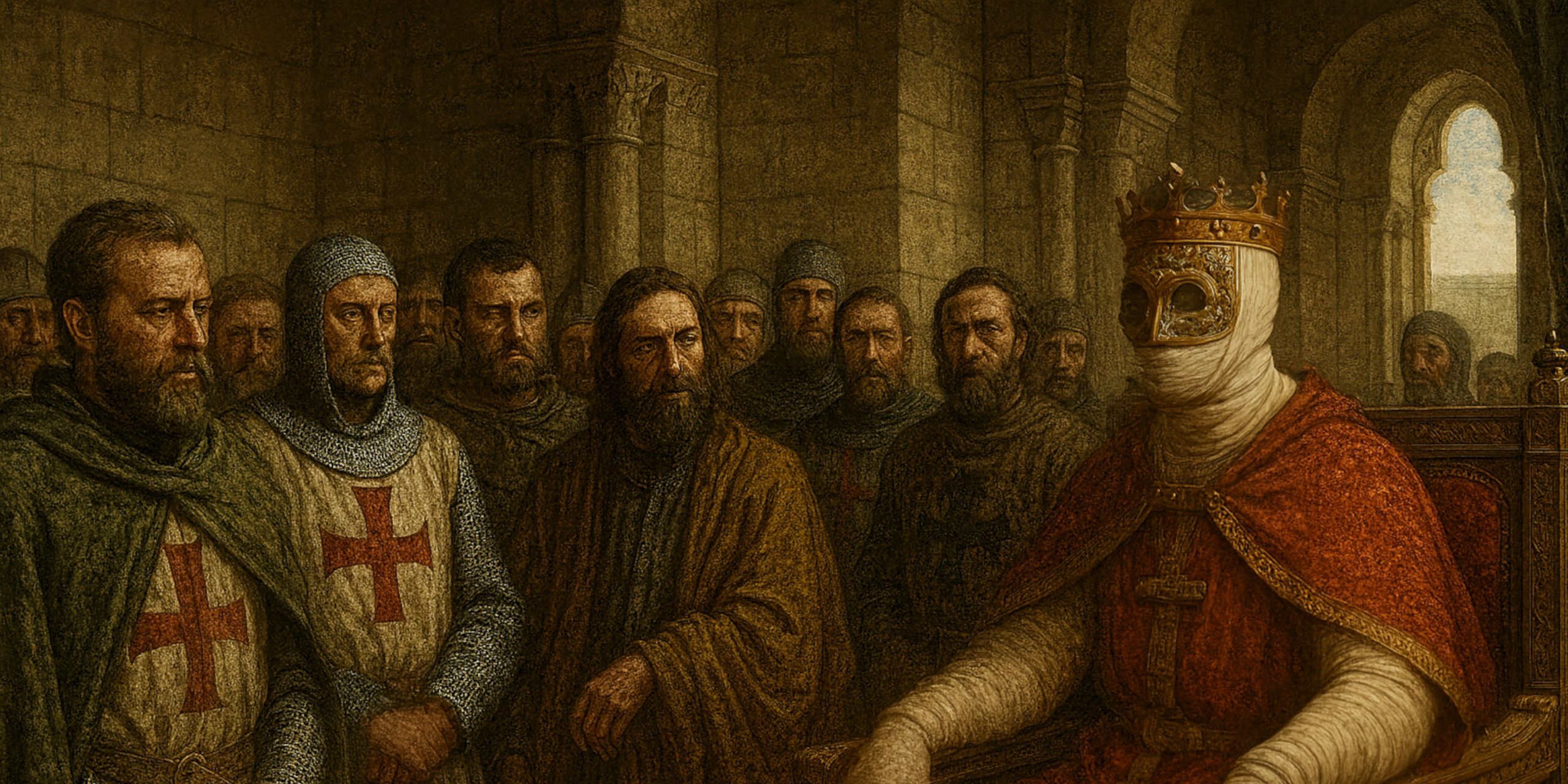
Baldwin IV of Jerusalem, often called the “Leper King,” ruled a deeply fractured kingdom at the edge of Christendom. His reign from 1174 to 1185 was defined not only by his illness but also by his ability to hold together a volatile patchwork of crusader lords, powerful barons, and ambitious relatives. Despite physical weakness, he managed to assert royal authority in an environment where many kings might have been little more than figureheads.
A Fractured Kingdom

By the time Baldwin came to power, the Kingdom of Jerusalem was already under strain. The baronial class, made up of Frankish lords and crusader families, held significant autonomy in their own fiefdoms. Power was concentrated in several dominant noble families: the Ibelins, the Lusignans, the Courtenays, and Raymond III of Tripoli among them.
Each had their own networks of clients, retainers, and ambitions. In such a setting, the authority of the crown depended more on political skill than brute force.
The Leper King Ascends
Baldwin’s accession in 1174 came at just thirteen years of age. Though diagnosed with leprosy as a child, he had already impressed observers with his intelligence and resilience. Initially under a regency, real power passed through the hands of his cousin Raymond of Tripoli, then later through figures like Miles of Plancy and Baldwin’s mother Agnes of Courtenay.
But once Baldwin took full control, he began navigating the competing noble factions with a striking sense of strategy. Far from a passive figure, he used the monarchy’s limited tools with precision.
Royal Authority Through Military Prestige
Despite his illness, Baldwin participated directly in military campaigns. His role in the Battle of Montgisard in 1177, where he and a small force defeated Saladin’s much larger army, was not just a military victory but a political one. It silenced doubts about his capacity to lead and elevated his standing among the barons. In a feudal society, martial success reinforced legitimacy.
By leading from the front when possible, Baldwin earned the loyalty of his knights and kept the nobility in check, as they could not easily question the leadership of a king who had proven himself in the field.
Playing the Nobles Against Each Other
Baldwin understood the importance of playing factions off one another. Rather than relying on a single noble house, he distributed influence strategically. At times, he backed the Ibelins; at others, he strengthened the hand of Raymond of Tripoli or supported the rise of Guy of Lusignan, even when unpopular.
He arranged politically calculated marriages and titles to either reward loyalty or curb the ambitions of overreaching barons. When Reynald of Châtillon returned from captivity and married into the powerful lordship of Oultrejordain, Baldwin tolerated his provocations toward Saladin to offset the power of more entrenched lords.
Dynastic Strategy and Succession
Baldwin also used the royal succession as a tool. Aware that his illness would shorten his life, he took great care in controlling who would inherit the throne. Initially naming his sister Sibylla’s young son Baldwin V as co-king in 1183, he effectively limited the influence of her husband, Guy of Lusignan, whom many nobles distrusted.
This move reassured the nobility that the future of the kingdom would not fall entirely into one faction’s hands. By retaining control over the regency, Baldwin kept himself as the ultimate arbiter of noble ambitions.
Crisis Management and Limits of Control
Still, Baldwin’s power had limits. His efforts to marginalise Guy of Lusignan ultimately backfired when he was forced to recall him due to lack of other politically viable candidates. His illness worsened, and by the end of his reign, power began slipping into the hands of the factions he had previously managed to restrain.
His death in 1185 set off a period of instability that he had long anticipated. Without his balancing presence, the kingdom quickly unravelled, culminating in the defeat at Hattin in 1187.
The Seven Swords Takeaway
Baldwin IV’s reign was marked by continuous juggling of competing baronial interests. His success lay not in suppressing noble power but in redirecting it, containing it, and occasionally co-opting it. Despite physical frailty, his political instinct, use of military authority, and dynastic acumen allowed him to maintain a tenuous hold on one of the most precarious kingdoms of medieval Christendom.
His rule stands as a rare example of how royal power could be maintained through intelligence and diplomacy, even when physical strength was failing and the foundations of the state were already cracked.



